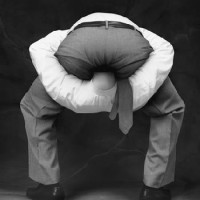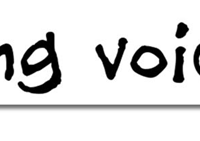 The Illusions of Psychiatry
The Illusions of Psychiatry
Article by Marcia Angell in New York Review of Books
Second part of an article on three books examining modern psychiaty’s reliance on unproven science, unscientific diagnoses and unproven medications to treat the increasingly large portion of the human condition that it considers to be a “disorder”.
How did this come to be? how did psychiatry embark on this route? how far down this route will we continue? …
 In Part 1 Marcia Angell reported on two accounts: one by science journalist Robert Whitaker and a second by psychologist Irving Kirsch on the epidemic of mental illness, the drugs used to treat it – the emerging effects and what they reveal about the society we are building.
In Part 1 Marcia Angell reported on two accounts: one by science journalist Robert Whitaker and a second by psychologist Irving Kirsch on the epidemic of mental illness, the drugs used to treat it – the emerging effects and what they reveal about the society we are building.
 In part 2 Angell examines an account from inside psychiatry: Unhinged, the recent book by Daniel Carlat, a psychiatrist, who provides a “disillusioned insider’s view of the psychiatric profession”.
In part 2 Angell examines an account from inside psychiatry: Unhinged, the recent book by Daniel Carlat, a psychiatrist, who provides a “disillusioned insider’s view of the psychiatric profession”.
And looks at the DSM – psychiatry’s diagnostic & statistical manual, it’s increasing role in US society [others too] and the use/misuse of science as key part of “a vigorous effort to remedicalize psychiatry ” – Melvin Sabshin, American Ps chiatric Association (APA).
Angell gives us a tour of how psychiatry shifted from trying to understand the mind to working with the brain. Operating within a narrower perspective, it reduced itself to practising psychopharmacology: concerned only with eliminating or reducing symptoms by manipulating brain chemicals.
By the 70s psychiatry was feeling threatened – from internal conflicts, emerging “anti psychiatry” critiques from the likes of Thomas Sasz; a more public discourse, like the movie One Flew Over The Cuckoo’s Nest; and from being percieved as a poor relation by other branches of medicine. The APA deliberately set out to use DSM-III as the main vehicle to have psychiatry taken seriously as “a specialty of medicine” and “to facilitate diagnostic agreement among clinicians, scientists, and regulatory authorities … to match patients with newly emerging pharmacological treatments”. Cash-rich pharmaceutical companies also saw their opportunity to use the new regime to create and legitimise new markets and began the deliberate practice of funding the key opinion leaders in psychiatry – to help shape the DSM as a tool for matching diagnosis to drug treatments.
And lest we think the DSM is a tool only for psychiatrists, it is used by the rest of the medical profession, insurance companies, hospitals, courts, prisons, researchers, government agencies – and schools. DSM IV sold over a million copies – at over $130 each and alongside the revenue from drug companies represents significant income for the psychiatry’s proffessional body.
This table shows how number of psychiatric diagnoses has increased with subsequent revisions of the DSM.
DSM [1952]
DSM-II [1968] 186 diagnoses
DSM-III [1980] 256 diagnoses
DSM-IV TR [2000] 365 diagnoses
Angell does a great job of winding together the accounts of Robert Whitaker, Irving Kirsch, and Daniel Carlat with her own description of the story of the DSM : painting us a picture of how we pinned our best hopes on being able to fix the various troubled states that are a part of our human condition with the easy option of popping a pill – and how powerful forces came to reinforce that process. As a result we now seem to be witnessing an epidemic most entirley of our own making.
The really scary thing is how we are now turning those powerful forces to our kids – Angell tells us that already one in ten boys are being prescribed psychoparmaceuticals for ADHD.
And moves onto the already widespread use of psychoactive drugs in children, and the “baleful influence of the pharmaceutical industry on the practice of psychiatry”.
In an excellent article Angell gives us a tour of how the twin prongs of “science” and the might of the pharmaceutical industry have come to be used together to bring us to where we are, indiscriminately using psychoactive drugs on our kids.
Article by Marcia Angell MD at New York Review of Books
Part 1 The Epidemic of Mental Illness: Why?
Part2 The Illusions of Psychiatry
Maybe, we are on the cusp of realising that perhaps the biggest psychiatric disorder is the last forty years of psychiatric practice – a fix that fails if ever there was.


































































































You must be logged in to post a comment.